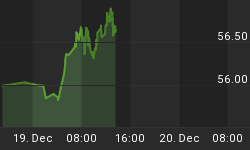Case-Shiller CPI is formulated by substituting the Case-Shiller housing index for Owner's Equivalent Rent in the CPI. For a complete description of the reasons and methodology, please see What's the Real CPI?
The chart and commentary below is courtesy of my friend "TC" who writes:
CS-CPI continues to fall albeit at a less rapid pace and measures -5.1% YOY. Meanwhile the government's CPI-U also continues to fall at a slower pace and measures -1.5% YOY. The divergence is to due to the government's housing metric of Owners' Equivalent Rent (OER) continuing to show price increases (+1.7% YOY) vs. Case-Shiller data showing price decreases (-13.3% YOY).

Since the Case Shiller housing market peak in June 2006, OER is up +7.7%, while the Case-Shiller index is down -30.9% - an amazing 3860 basis point divergence!
CS-CPI YOY has now fallen for 11 consecutive months and 14 of the past 18. Meanwhile the government's CPI-U YOY has fallen for 6 consecutive months.
Thanks "TC".
With rental prices and food prices starting to drop, I expect to see CPI-U (the official CPI) to continue to decline. Moreover, with the coming end of the $8,000 housing tax credits for new home buyers and a phase-out of treasury monetization by the Fed, a reversal in the housing index is likely.
It's highly unlikely that home prices have bottomed in the bubble areas as well as most major cities, even though some select markets, especially Florida areas that have been hammered mercilessly, may be in a bottoming process now.
Dr. Housing Bubble outlines a solid case for "the bottom is not in" viewpoint in Shadow Inventory Case Study. Please take a look. It's a good read.















